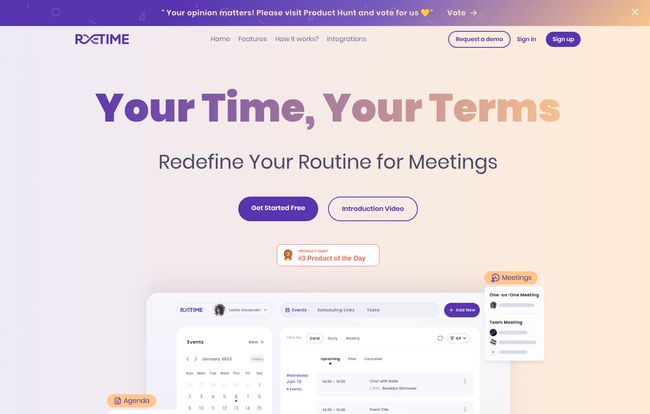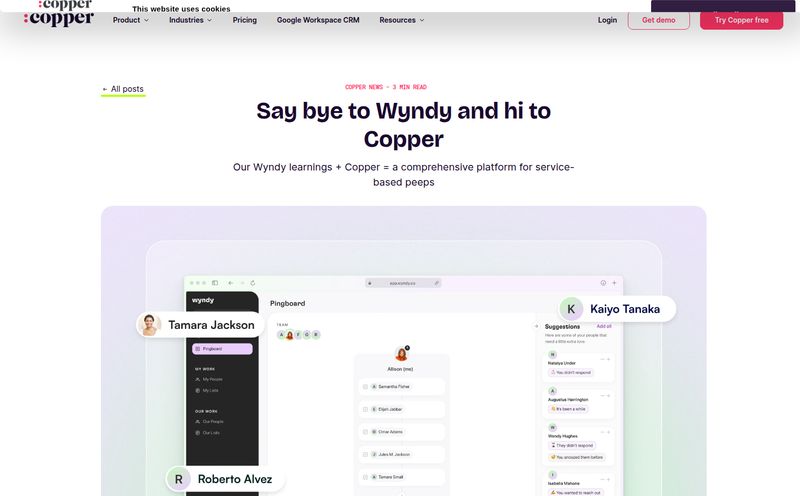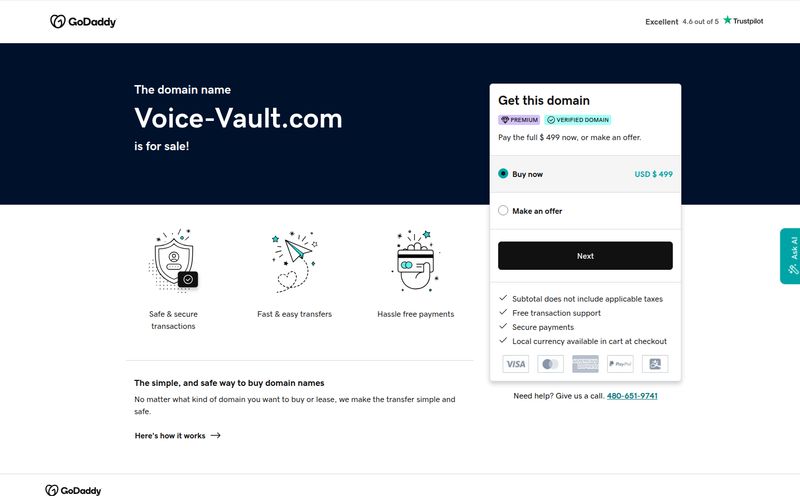If I have to answer one more email with the subject line “Re: Re: Fwd: Checking your availability,” I might just pack it all in and become a goat farmer. Scheduling meetings can feel like a game of digital battleship. You send your times. They send theirs. You cross-reference three different calendars and pray you didn't forget about that dentist appointment. It's a time sink. A productivity vampire, really.
For years, we've had tools like Calendly trying to solve this, and they do a pretty good job. But I've always felt there was a piece missing. The booking is just the start of the meeting process, right? What about the agenda? The notes? The follow-up?
So when I stumbled upon a tool called Retime, with the tagline “Redefine Your Routine For Meetings,” my curiosity was officially piqued. It claims to be more than just a scheduling link; it promises to handle the whole shebang. But does it deliver? I decided to take a look.
So, What Exactly is Retime, Anyway?
At its core, Retime is an online scheduling tool. You know the drill: you set your available hours, create different event types, and send a single, beautiful link to someone who wants to book a chat. No more email ping-pong. They pick a time that works for them from your pre-approved slots, and boom—it’s on both your calendars. Simple.
But where Retime tries to carve its own niche is by integrating agenda creation and meeting notes directly into the workflow. Think of it this way: it’s not just a receptionist booking the appointment; it’s a full-blown executive assistant who also preps the meeting room and takes the minutes. It’s an ambitious idea, and one that, if done right, could seriously streamline things for freelancers, consultants, and small teams.
My First Impressions: A Clean and Simple Setup
Getting started looks incredibly straightforward. The homepage funnels you right into a “Get Started Free” flow, which is always a good sign. The whole process is broken down into three simple steps that anyone can understand:
- Define your schedule: Tell Retime when you're free and connect your existing calendar.
- Share your link: Send the booking link to clients or colleagues, or even embed it on your website.
- Get booked: The event automatically appears in your synced calendar.
It’s a classic, effective flow because it just works. The user interface shown in the demos looks clean, modern, and uncluttered. Lots of whitespace, friendly colors... it doesn’t feel intimidating, which is more than I can say for some enterprise-level software I've wrestled with.

Visit Retime
The Features That Actually Matter
A tool can look pretty, but it’s the engine under the hood that counts. Let’s look at the features Retime is putting front and center.
More Than Just a Booking Link: Agenda and Notes
This is the big one for me. The ability to attach discussion points and build an agenda before the meeting is a game-changer. How many times have you shown up to a call where the first ten minutes are spent figuring out what you’re supposed to be talking about? Retime lets you set those expectations from the get-go. Then, during or after the meeting, you can capture notes and action items in the same place. This creates a single source of truth for every meeting, which is just fantastic for organization and accountability.
The All-Important Calendar Integrations
A scheduling tool that doesn’t play nice with your existing calendar is worthless. Period. Retime seems to get this, offering integrations with the heavy hitters: Google Calendar, Office365 Calendar, and even Zoho. It also connects with Google Meet for automatic video call link generation. In my experience, this is the bare minimum for survival in this space. Some might see this reliance on integrations as a con, but I see it as a smart move. Why reinvent the wheel when you can just build solid bridges to the ecosystems people already live in?
Taking Control of Your Availability
I once had a potential client book a 7 AM call with me on a Monday because I forgot to block off my “absolutely-not-a-morning-person” hours. Never again. Retime lets you define your availability with precision. You can set up different schedules for different types of meetings, add buffers between appointments so you have time to breathe, and prevent last-minute bookings. It's about setting boundaries, and this tool gives you the digital fence to do it.
The Elephant in the Room: Retime Pricing
Alright, so here's where things get a little... mysterious. I did what any good reviewer does: I went searching for the pricing page to see what this would cost me. And... crickets. The pricing page link seems to be down at the moment, leading to a 404 error.
Now, this could mean a few things. Maybe they're revamping their plans. Maybe it's a temporary glitch. Who knows. But here’s what we do know from the homepage:
- There is a 100% free plan to get started.
- You can activate a 14-day trial of a paid plan at any time.
This tells me they operate on a freemium model, which is great. You can try the core functionality without opening your wallet. As for the paid features? I'd have to speculate they'd include things like removing Retime branding, more advanced integrations, and more robust team scheduling features—pretty standard stuff for this kind of SaaS tool. The lack of a clear price list is a bit of a bummer but it’s not a dealbreaker to just try out the free version.
How Does Retime Stack Up Against the Competition?
You can't talk about a scheduling tool without mentioning giants like Calendly or a rising star like SavvyCal. So how does Retime compare? Well, Calendly is the established king. It has more integrations and a proven track record. SavvyCal has awesome features like allowing recipients to overlay their own calendar to find a spot.
Retime's angle isn't to beat them at their own game, but to change the game slightly. By bundling scheduling with agenda and notes, it's targeting a specific pain point: meeting chaos. It's betting that users want an all-in-one solution for the entire meeting lifecycle, not just the booking part. It's a smart differentiator.
My Final Verdict: Is Retime Worth Your Time?
After digging into what Retime offers, I'm genuinely optimistic. It's a thoughtfully designed tool that correctly identifies a major gap in the productivity space. The focus on integrating agendas and notes isn't just a gimmick; it’s a practical feature that could save users a ton of hassle.
Is it perfect? No. The lack of a clear public pricing page is an odd choice, and it's still a newer player in a field with some serious veterans. But the promise is there. The free plan makes it a completely risk-free tool to try out, and I'd recommend it for any freelancer, consultant, or small business owner who feels like their meetings could be run a little… better. It’s a strong contender that’s definitely worth keeping an eye on.
Frequently Asked Questions about Retime
- Is Retime free to use?
- Yes, Retime offers a free plan with core scheduling features. You can get started without a credit card. They also offer a 14-day trial for their paid plans, though specific features of those plans aren't detailed publicly at the moment.
- What calendars does Retime integrate with?
- Retime integrates with the most popular calendar applications, including Google Calendar, Office 365 Calendar, and Zoho Calendar. It also connects with Google Meet to automatically generate video conferencing links.
- Can I use Retime for team scheduling?
- Yes, the platform includes features for team scheduling, allowing you to coordinate meetings across multiple team members' calendars.
- What makes Retime different from Calendly?
- While both are excellent scheduling tools, Retime's key differentiator is its built-in functionality for creating meeting agendas and taking meeting notes, aiming to manage the entire meeting workflow in one place, not just the booking.
- Can I take meeting notes directly in Retime?
- Absolutely. One of Retime's standout features is the ability to manage and capture meeting notes and action items directly within the platform, keeping everything related to a specific meeting organized together.



